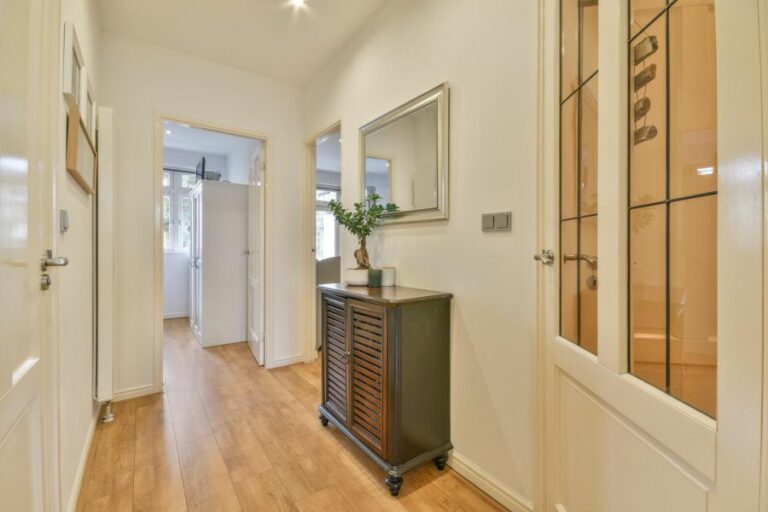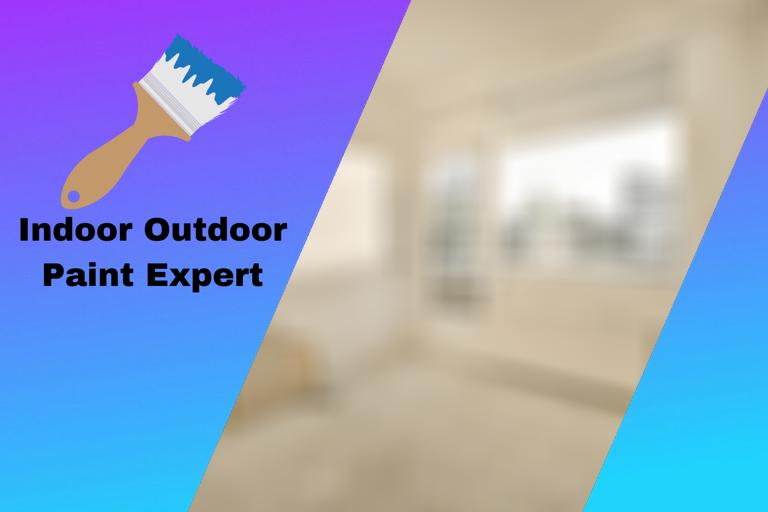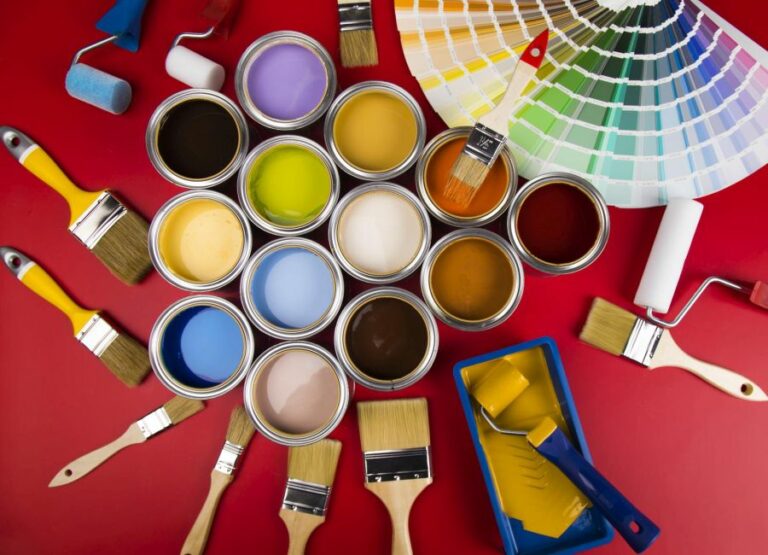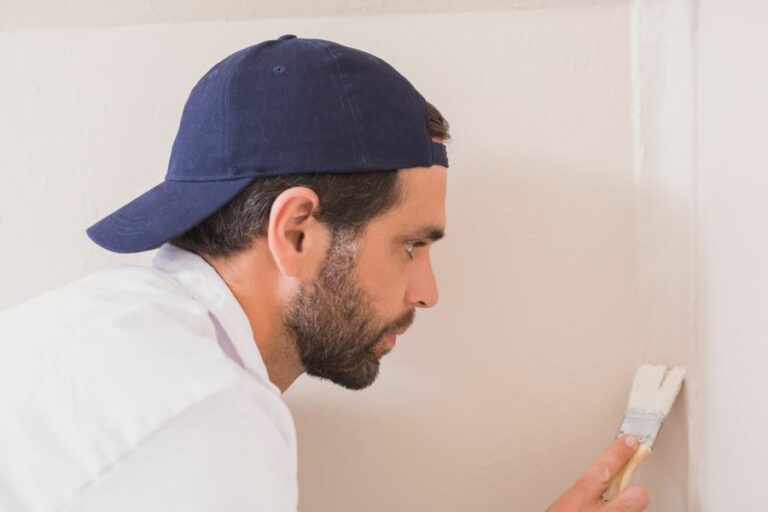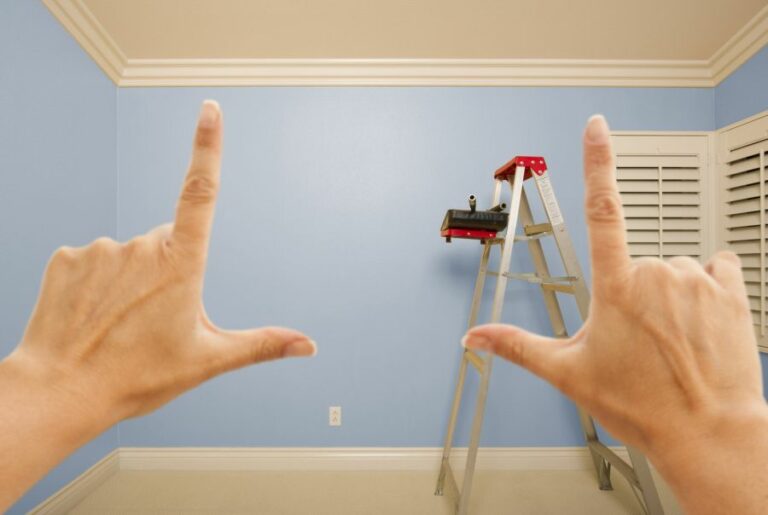Different Types Of Indoor Paint, 25 Things You Should Know
When it comes to indoor paint, the variety of options available can be overwhelming, but fear not – we’ve got you covered! To help you make an informed decision, we will delve into the different types of indoor paint specially designed for various surfaces and needs.
Different types of indoor paint:
Indoor paint types include water-based paints such as latex and acrylic, oil-based paints like alkyd and enamel, and specialty paints such as primer, chalkboard, and ceiling paint. Each type offers specific benefits and drawbacks, such as durability, resistance to moisture, and finish quality, making them suitable for different purposes and surfaces.

Discover the perfect paint for your indoor spaces! Learn about various types of indoor paint, their unique properties, and which one suits your needs best. Don’t settle for less read on and make your walls happy!
Contents
- 1 Various Kinds of Interior Paints
- 2 Top 5 Wall Paint Finishes: An Overview
- 3 Exploring Diverse Interior Wall Paint Options
- 4 Most Popular Interior Paint: A Guide
- 5 Eggshell vs. Satin: Which is Best for Walls?
Various Kinds of Interior Paints
• Introduction
As a painting professional with years of experience, I understand how important it is to choose the right type of paint for every indoor project.
• Water-Based Paints
– Latex Paint
Latex paint is a water-based paint, which is one of the most popular choices for indoor use. It is known for its quick drying time, low odor, and easy clean-up with soap and water. Additionally, latex paint resists yellowing and is less likely to crack compared to oil-based paint.
Many professionals, including myself, recommend latex paint for indoor projects due to its versatility and user-friendly properties. Visit the EPA website for more information on low-VOC latex paints.
– Acrylic Paint
Acrylic paint is another type of water-based indoor paint that is very similar to latex paint. While some people use the terms interchangeably, there are a few differences between them. Acrylic paint typically contains a higher percentage of acrylic polymers, which makes it more resistant to wear and tear.
This makes acrylic paint a fantastic choice for high-traffic areas and rooms that are exposed to moisture, such as bathrooms and kitchens.
• Oil-Based Paints
– Alkyd Paint
Alkyd paint is a type of oil-based paint that is known for its durability, smooth finish, and resistance to moisture. While it takes longer to dry than water-based paints, it results in a harder, more scratch-resistant surface.
Alkyd paint is ideal for woodwork, trim, doors, and cabinets where durability and a smooth, professional finish are desired. However, it does emit a strong odor, and clean-up requires the use of mineral spirits or paint thinner.
– Enamel Paint
Enamel paint is another oil-based indoor paint option that provides a hard, glossy finish. It is highly resistant to moisture, making it a great choice for rooms that experience high humidity or frequent splashes, such as bathrooms and kitchens.
Enamel paint is also excellent for furniture and cabinetry for a professional, high-gloss look. Keep in mind that this type of paint takes longer to dry and releases a strong odor compared to water-based paints, and clean-up requires solvents.
• Speciality Paints
– Primer
Primer is a crucial step in the painting process, as it prepares the surface for the actual paint application. Primers can be oil-based, latex, or acrylic. It is vital to choose a primer that is compatible with the type of paint you plan on using.
Using a primer ensures better adhesion of paint, increases its durability, and helps achieve a more uniform finish. I highly recommend using a primer, especially when painting new surfaces or covering dark colors with lighter ones.
– Chalkboard Paint
Chalkboard paint, as the name suggests, allows you to create a writable, erasable chalkboard surface on your walls. This type of paint can be great for creating fun and functional spaces in children’s rooms, kitchens, or home offices.
Chalkboard paint must be applied in multiple coats and requires sealing with a clear topcoat for the best results.
– Ceiling Paint
Ceiling paint is a type of flat, matte paint designed specifically for ceilings to reduce glare and hide imperfections. This paint minimizes light reflection, which can emphasize surface flaws.
With a thicker consistency, ceiling paint is less likely to drip or splatter during the application, making it easier to work overhead.
• Conclusion
In conclusion, there are many types of indoor paint available to suit various needs and preferences. The key is to consider factors such as the room’s purpose, the paint’s durability, finish, and ease of application.
When in doubt, consulting with a professional can help guide your decision-making process. I hope this article has provided valuable information and assisted you in choosing the perfect paint for your next indoor project.
Type | Description | Best Uses |
|---|---|---|
Matte or Flat | Matte paint has a low sheen and is non-reflective. It is easy to apply but less durable than other types of paint. | Low-traffic areas such as bedrooms, living rooms, and ceilings. |
Eggshell | Eggshell paint has a low to medium sheen and is more durable than matte paint. It can be easily cleaned. | Areas with moderate traffic, such as dining rooms and family rooms. |
Satin | Satin paint has a medium to a high sheen and is durable and washable. It can show uneven surfaces or application errors. | High-traffic areas such as hallways, kitchens, and bathrooms. |
Semi-Gloss | Semi-gloss paint has a high sheen and is durable and easy to clean. It can withstand moisture and is resistant to stains. | Kitchens, bathrooms, trim, and doors. |
Gloss | Gloss paint has a very high sheen and is the most durable type of indoor paint. It can be easily cleaned and can withstand wear and tear. | Doors, trim, cabinets, and high-use areas. |
Top 5 Wall Paint Finishes: An Overview
Paint finish can significantly impact the durability, appearance, and maintenance of a wall in both residential and commercial settings. Homeowners and contractors must choose the right type of paint finish to meet specific needs and preferences.
Understanding the different types of paint finishes can help ensure a successful paint job characterized by a long-lasting, attractive finish.
• Matte Paint Finish
Matte, or flat finish, is the most popular and widely used paint finish for interior walls. Matte paint provides a smooth, even texture and excellent coverage, effectively hiding minor imperfections and blemishes on the wall surface.
– Benefits
The primary benefits of matte paint include the following:
- Excellent coverage and hiding power
- Non-reflective surface
- Reduced glare, ideal for rooms with abundant natural light
- Rich, deep color appearance owing to its absorption quality
– Applications
Matte finish is well suited for:
- Living rooms
- Bedrooms
- Dining rooms
- Ceilings
I recommend this finish for rooms where a cozy, intimate atmosphere is desired or where hiding wall imperfections is necessary. However, keep in mind that a matte finish is less resistant to stains and can be challenging to clean.
• Eggshell Paint Finish
Slightly glossier than matte paint, the eggshell finish strikes a balance between aesthetics and durability. This finish offers a subtle sheen while maintaining a low profile, and it’s easier to clean compared to a matte finish.
– Benefits
The eggshell finish offers several advantages:
- Soft luster without excessive shininess
- Better stain resistance than matte finish
- Relatively easy to clean
- Suitable for various room types and wall conditions
– Applications
This finish is ideal for:
- Bedrooms
- Hallways
- Living rooms
Eggshell is a versatile choice for homes with small children, given its balance between appearance and functionality.
• Satin Paint Finish
With a considerable sheen and smooth texture, a satin finish is a popular choice for homeowners seeking a washable and durable paint finish. It offers enhanced durability compared to matte and eggshell finishes, making it perfect for high-traffic areas.
– Benefits
Satin finish provides several benefits, including:
- Good stain resistance
- Easy to clean and maintain
- Attractive sheen
- Reflects light, making rooms appear brighter
– Applications
The satin paint finish is well-suited for:
- Kitchens
- Bathrooms
- Hallways
- Doors
- Trims
This finish is an excellent option for rooms subjected to moisture or high traffic levels.
• Semi-Gloss Paint Finish
Featuring a noticeably glossy appearance, the semi-gloss finish is highly durable, stain-resistant, and easy to clean. This finish can easily endure frequent cleaning, making it perfect for areas exposed to moisture, grease, and dirt.
– Benefits
The primary benefits of semi-gloss paint include the following:
- Excellent durability and resistance to wear
- Easy to clean and maintain
- Resistant to mold and mildew
- Enhances room brightness due to its reflective nature
– Applications
Semi-gloss finish is ideal for:
- Kitchens
- Bathrooms
- Laundry rooms
- Doors
- Trims
This finish is an excellent choice for rooms where cleanliness and durability are paramount.
• Gloss Paint Finish
Gloss finish is the most durable and shiny paint finish available. Known for its reflective qualities and resistance to stains, this finish is a top choice for surfaces that require frequent cleaning and come into contact with various elements.
– Benefits
Gloss paint finish offers several advantages:
- Exceptional durability and stain resistance
- Easy to clean and maintain
- Enhances room brightness due to its reflective nature
– Applications
The gloss paint finish is well-suited for:
- Doors
- Window trims
- Cabinets
- Furniture pieces
I recommend this finish for surfaces that need to withstand high levels of wear and tear.
In conclusion, homeowners and contractors must carefully examine the unique features, benefits, and applications of the five different types of wall paint finishes to select the perfect finish for their project.
Whether prioritizing aesthetics, durability, or ease of maintenance, there is a paint finish to suit every need and preference.
Type | Description |
|---|---|
Flat or Matte | Provides a smooth and uniform appearance without a shine. It is good for hiding imperfections and for low-traffic areas. |
Eggshell | Has a low sheen and is more durable than flat or matte. It is easier to clean and is suitable for living rooms, bedrooms, and hallways. |
Satin | Offers a soft and velvety finish with a slight shine. It is resistant to mildew, stains, and dirt, making it ideal for kitchens, bathrooms, and high-traffic areas. |
Semi-gloss | Has a noticeable shine that reflects light, making it easier to clean. It is durable and ideal for kitchens, bathrooms, and trim work. |
Glossy | Provides a high sheen and a reflective finish. It is very durable and easy to clean, making it suitable for doors, trim, and cabinets. |
Exploring Diverse Interior Wall Paint Options
Painting your interior walls can be a great way to refresh your living space and give it a new look. With so many paint options available in the market, it can be overwhelming to choose the right one for your home.
• Water-Based Paints
– Acrylic Paints
Acrylic paints, also known as latex paints, are among the most popular and widely-used paints for interior walls. These are water-based and provide a smooth finish that is low in odor and quick to dry.
Pros:
- Low VOC (Volatile Organic Compounds) content, which means fewer harmful chemicals and better indoor air quality
- Easy to clean with soap and water
- Quick drying time; usually within a couple of hours
- Resistant to cracking and peeling
Cons :
- Might show brush or roller marks if not applied properly
- Can require more than one coat for complete coverage
– Recommendation
Acrylic paint is a great choice for interior walls due to its durability, easy application, and low VOC content. It is suitable for most rooms, including kitchens, bathrooms, and living areas.
• Oil-Based Paints
Oil-based paints, also known as alkyd paints or solvent-based paints, are made with natural or synthetic oil as the binder. Oil-based paints tend to be durable and provide a high-gloss finish.
Pros:
- Can provide a smoother finish than water-based paints
- More resistant to wear and tear
- Can cover stains and imperfections better than water-based paints
Cons:
- Higher VOC content, which can lead to more fumes and reduced indoor air quality
- Longer drying time; can take up to 24 hours to dry completely
- Requires the use of mineral spirits or paint thinner for cleanup
– Recommendation
Oil-based paints can be excellent for high-traffic areas like hallways, dining rooms, and doors, but their high VOC content and slower drying time make them less appealing for other spaces. If you choose to use an oil-based paint, ensure proper ventilation for a healthier environment.
• Specialty Paints
There are also many specialty paints available for specific applications and purposes within your home.
– Chalk Paint
Chalk paint is a water-based, decorative paint that provides an ultra-matte finish and is ideal for painting furniture or decorative accents. It is known for its ease of use and ability to adhere to various surfaces without the need for primer.
– Magnetic Paint
Magnetic paint is a water-based primer that contains fine iron particles, allowing it to create a magnetic surface once dry. It is excellent for playrooms, offices, or any space you want to add a unique and functional feature.
– Dry Erase Paint
Dry erase paint, also known as whiteboard paint, is a clear or white paint that creates a surface suitable for dry-erase markers. It is an excellent choice for offices, children’s playrooms, or any space where you want a writable surface.
• Choosing the Right Paint for Your Interior Walls
When selecting a paint for your interior walls, consider the following factors:
- Room usage: High-traffic areas, such as hallways and kitchens, may benefit from a more durable paint like oil-based paint, while water-based paints are more suitable for bedrooms or living areas.
- Surface condition: If your walls have many imperfections or stains, oil-based paint can provide better coverage.
- Ventilation: Ensure adequate ventilation, especially when using oil-based paints with higher VOC content.
Lastly, consider the finish or sheen of the paint. Matte finishes hide imperfections better, while glossy finishes are more durable and resistant to stains.
With this knowledge, you can make an informed decision on the best type of paint to suit your specific needs and create a beautiful and functional space in your home.
Paint Type | Description | Advantages | Disadvantages |
|---|---|---|---|
Matte Paint | Non-reflective finish that covers imperfections and provides an even color | Good for hiding wall imperfections, easy to touch-up | Can become dirty quickly, may require multiple coats |
Matte Enamel Paint | Similar to matte paint, but more durable and easier to clean | Durable, easy to clean, great for high-traffic areas | May require multiple coats for even coverage |
Satin Paint | Has a slight sheen, more durable than matte paint, and easier to clean | Great for high-traffic areas, easy to clean, more resistant to stains | Can show brush strokes, harder to touch-up |
Eggshell Paint | Low sheen, smooth finish with a subtle shine, and slightly better durability than matte paint | Covers wall imperfections, easier to clean than matte paint | Not as durable as satin or gloss paint, can show brush strokes |
Semi-Gloss Paint | Has a shiny finish, highly durable, and easy to clean | Good for areas exposed to moisture or high traffic, easy to clean | Shows wall imperfections, harder to touch-up |
Gloss Paint | Has a highly-reflective finish, very durable, and easy to clean | Great for high-traffic areas, easy to clean, provides a dramatic appearance | Shows wall imperfections, requires several coats for proper finish |
Most Popular Interior Paint: A Guide
As an experienced painter and decorator, I have often been asked about the most common type of interior paint. Water-based paint, also known as latex or acrylic paint, is the most popular choice for homeowners and professionals alike.
• Advantages of Water-based Paint
– Easy Application and Cleanup
Water-based paints are known for their ease of application and hassle-free cleanup. These paints can be easily applied with a brush or roller and have fairly good coverage. Cleanup is a breeze using just soap and water, which makes it an attractive choice for both DIY enthusiasts and professional painters.
– Quick Drying
Water-based paint typically dries faster than oil-based paint, allowing you to complete your painting project in less time. This also means that you can apply a second or third coat of paint within a few hours rather than having to wait for an entire day, as is the case with oil-based paints.
– Low VOCs
Water-based paint features low levels of volatile organic compounds (VOCs), making it a more environmentally friendly choice. VOCs are harmful chemicals that can cause a wide range of health problems and contribute to air pollution.
By opting for water-based paint, you are contributing to a healthier interior environment as well as doing your bit for the planet. The United States Environmental Protection Agency (EPA) offers in-depth information on VOCs and indoor air quality.
– Wide Range of Colors and Finishes
Water-based paint is available in a broad palette of colors and a variety of finishes, including flat/matte, eggshell, satin, semi-gloss, and gloss. This allows you to choose the perfect shade and finish to complement your interior design and achieve the desired look and feel.
– Good Adhesion
Water-based paints adhere well to a variety of surfaces, including both previously painted and bare surfaces. This means you can generally use water-based paint on different surfaces without being concerned about its performance.
• Disadvantages of Water-based Paint
– Lower Durability
While water-based paint has improved significantly over the years, it still lacks the level of durability offered by oil-based paint. This means that it may be less resistant to wear and tear over time, especially in high-traffic areas.
– Slightly Less Smooth Finish
When compared to oil-based paints, water-based paints may sometimes create a slightly less smooth finish. Oil-based paints generally self-level better and have a longer drying time, which allows brush strokes and roller marks to level out, providing a smoother finish.
• Oil-Based Paint: The Alternative
Oil-based paint, also known as alkyd paint, is another option for interior painting. While not as popular as water-based paint, it does have specific applications where its benefits shine.
– Advantages
- Superior durability
- Smooth, self-leveling finish
- Better coverage
– Disadvantages
- Longer drying time
- High VOC content
- More difficult cleanup, requiring mineral spirits or paint thinner
• Choosing the Right Interior Paint for Your Project
In conclusion, water-based paint is the most common type of interior paint due to its ease of application, quick drying time, low VOCs, and versatile color options. While it may not be as durable as oil-based paint, modern formulations have improved its performance significantly.
I recommend using water-based paint for most interior projects. However, if durability and a smoother finish are your priorities, consider using oil-based paint for specific areas, such as trim or doors. Always ensure proper ventilation and consider the environmental impact when choosing your paint.
Ultimately, the right paint for your project will depend on your specific needs and the desired outcome. With a better understanding of the advantages and disadvantages of both water-based and oil-based paints, you can make an informed decision for your next interior painting project.
Question | Answer |
|---|---|
What is the most common type of interior paint? | Latex paint (also known as water-based or acrylic paint) |
Eggshell vs. Satin: Which is Best for Walls?
Choosing the right paint finish for your walls can be a complex task, as there are various factors to consider.
• Understanding Paint Finishes
Before we compare eggshell and satin finishes, let’s first define what a paint finish is. A paint finish refers to the sheen level or glossiness of a paint’s surface after it dries. Different paint finishes can dramatically change the appearance and durability of your walls.
– Eggshell Finish
Eggshell finish, as the name suggests, has a low sheen level that resembles the surface of an eggshell. This finish sits between a matte finish and a satin finish in terms of sheen levels.
Pros of Eggshell Finish
- Subtle Appearance: Eggshell finish has a soft, subtle sheen that works well with most colors while still remaining less shiny than other finishes. This is a great option for creating a sophisticated and elegant look in your home.
- Better Durability than Flat Finishes: Eggshell finish is more durable than flat or matte finishes, making it a better choice for areas prone to wear and tear, such as family rooms and bedrooms.
- Easier to Clean than Flat Finishes: Eggshell finish is easy to clean, as it can withstand gentle scrubbing without removing the paint.
Cons of Eggshell Finish
- Less Durable than Satin Finish: Eggshell finish is not as durable as satin finish, which means it may not be the best choice for high-traffic areas like hallways and kitchens.
- Highlights Imperfections: While eggshell finish masks some wall imperfections, it may still show through in certain cases. Proper surface preparation and priming is essential when using this finish.
– Satin Finish
Satin finish falls between eggshell and semi-gloss in terms of sheen levels, offering a light-reflective finish that is slightly glossier than eggshell.
Pros
- Versatile Appearance: The slightly glossy appearance of the satin finish makes it versatile and suitable for various rooms and surfaces, including walls, trim, and doors.
- Increased Durability: Satin finish is more durable than eggshell finish, making it ideal for high-traffic areas like kitchens, bathrooms, and hallways.
- Easy to Clean: Satin finish can withstand scrubbing and cleaning, which is especially beneficial in areas that are exposed to moisture or staining.
Cons
- Highlights Imperfections: Satin finish can draw attention to imperfections on the wall’s surface, so careful preparation and priming are necessary before applying this finish.
- Less Forgiving to Apply: Due to its higher sheen level, satin finish can be less forgiving during the application process. Brush strokes and roller marks may be more visible if not applied correctly.
• Factors to Consider When Choosing Between Eggshell and Satin Finish
Several factors can influence your decision when choosing between eggshell and satin finishes for your walls.
- The Room’s Function: Consider the room’s purpose and the level of foot traffic it will receive. For high-traffic areas like kitchens, bathrooms, and hallways, a satin finish is a better choice due to its durability and ease of cleaning. For bedrooms and living rooms with less foot traffic, an eggshell finish may be more suitable.
- Aesthetics: The desired look can also impact the choice between eggshell and satin finish. If you want a subtle sheen, an eggshell finish is the right choice, whereas if you prefer a more reflective finish, go for satin.
- Wall Imperfections: If your walls have imperfections or uneven surfaces, an eggshell finish may be more forgiving, while a satin finish could highlight these issues.
- Application Skills: If you’re new to painting or not confident in your painting skills, an eggshell finish may be easier to work with, as it is more forgiving of brush and roller marks than a satin finish.
• Expert Recommendation
Based on my personal experience, I recommend the satin finish for high-traffic areas due to its durability, ease of cleaning, and versatile appearance. For spaces that require a more subtle and sophisticated look, the eggshell finish is an excellent choice.
Ultimately, choosing between eggshell and satin finishes for your walls comes down to your specific needs, preferences, and the intended use of the space you are painting. Remember to consider factors such as the room’s function, aesthetics, and any existing wall imperfections when making your decision.
For more information on choosing the right paint finish for your home, visit the Paint Quality Institute.

